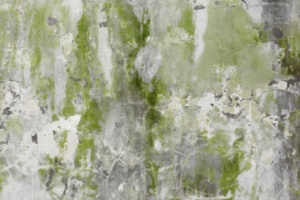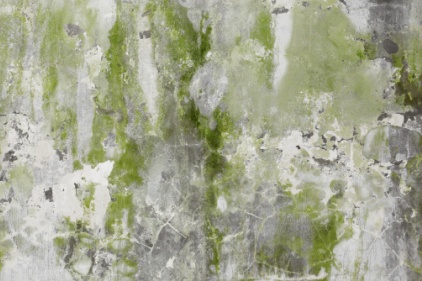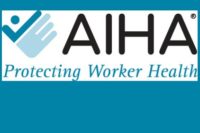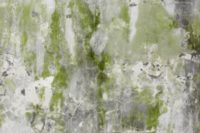 While brief episodes of mold in a building are normal and pose little risk to health, persistent dampness and mold damage requires prevention, management and effective remediation in order to reduce new onset asthma, lead to savings in health care costs, and improve public health.
While brief episodes of mold in a building are normal and pose little risk to health, persistent dampness and mold damage requires prevention, management and effective remediation in order to reduce new onset asthma, lead to savings in health care costs, and improve public health.
That’s according to a newly released Position Statement from the American Industrial Hygiene Association (AIHA) on mold and dampness in the built environment. The position statement is sponsored by Sponsored by the AIHA® Biosafety and Environmental Microbiology Committee and Indoor Environmental Quality Committee.
“Well conducted epidemiology studies in several countries have consistently shown that exposures from building/house dampness and mold have been associated with increased risks for respiratory symptoms, asthma, hypersensitivity pneumonitis, rhinosinusitis, bronchitis, and respiratory infections,(4,5)” according to the statement.
“In studies conducted in the nonindustrial workplace, individuals with asthma or hypersensitivity pneumonitis were found to be at risk for progression to more severe disease if the relationship between illness and exposure to the damp building was not recognized and exposures continued.(6)
“Three recent, high quality, systematic reviews of the available evidence concluded that the implementation of interventions that combine elimination of moisture intrusion and leaks and removal of moldy items help to reduce mold exposure and respiratory symptoms and new onset asthma.(4,5,7) This position has also been taken by National Institute for Occupational Safety and Health (NIOSH) and many State governments (8), Health Canada(9,10) and internationally by the World Health Organization(11).”
The statement points out that while the design and location of a building have the greatest impact on the onset of serious mold damage, dealing with it requires a collaboration between occupants, building owners and managers, ventilation experts and occupational hygiene professionals.
In the statement, the AIHA recommends detecting and correcting leaks, condensation problems and floods quickly and effectively, limiting the buildup of indoor moisture, developing sampling data during an investigation that may be useful to physicians and decision-makers and – looking ahead.
“As new buildings are constructed, or older buildings are subject to major renovation, consistent effort is needed on the part of the architects and engineers involved in the design and construction of the structure, cladding, roof and HVAC system to make the building durable.”
Click here to view the position statement.
References
4. Mendell M.J., A.G. Mirer, K. Cheung, M. Tong, and J. Douwes: Respiratory and allergic health effects of dampness, mold, and dampness-related agents: a review of the epidemiologic evidence. Environ. Health Perspect. 119:748-56 (2011).
5. Quansah, R., M.S. Jaakkola, T.T. Hugg, S.A. Heikkinen, and J.J. Jaakkola: Residential dampness and molds and the risk of developing asthma: a systematic review and meta-analysis. PLoS One. 7(11):e47526 (2012).
6. Park, J.H. and J.M. Cox-Ganser: Mold exposure and respiratory health in damp indoor environments. Front Biosci. (Elite Ed.) 3:757-71 (2011).
7. Krieger J., D.E. Jacobs, P.J. Ashley, A. Baeder, G.L. Chew, D. Dearborn, H.P. Hynes, J.D. Miller, R. Morley, F. Rabito, and D.C. Zeldin: Housing interventions and control of asthma-related indoor biologic agents: a review of the evidence. J. Public Health Man. & Practice 16: s11-S20 (2010).
8. National Institute for Occupational Safety and Health (NIOSH): Preventing Occupational Respiratory Disease from Exposures Caused by Dampness in Office Buildings, Schools, and Other Nonindustrial Buildings. NIOSH Publication # 2013–102. Cincinnati, OH: NIOSH. (www.cdc.gov/niosh) (2012).
9. Health Canada: “Fungal Contamination in Public Buildings: Health Effects and Investigation Methods,” 2004. Available at http://www.hc-sc.gc.ca/ewhsemt/alt_formats/hecs-sesc/pdf/pubs/air/fungal-fongique/fungal-fongique-eng.pdf [Accessed February 12, 2013.]
10. Health Canada: “Residential Indoor Air Quality Guidelines: Moulds, 2007. Available at http://www.hc-sc.gc.ca/ewh-semt/alt_formats/hecssesc/pdf/pubs/air/mould-moisissures-eng.pdf . [Accessed February 12, 2013.]
11. World Health Organization (WHO): Guidelines for Indoor Air Quality: Dampness and Mould. WHO Regional Office for Europe, DK-2100. Copenhagen, Denmark: WHO. 2009.


